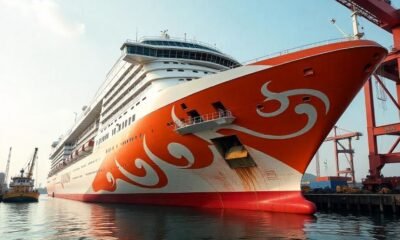Trip Planning
Why Do Cruise Lines Make Changes To Itineraries Before Sailing?
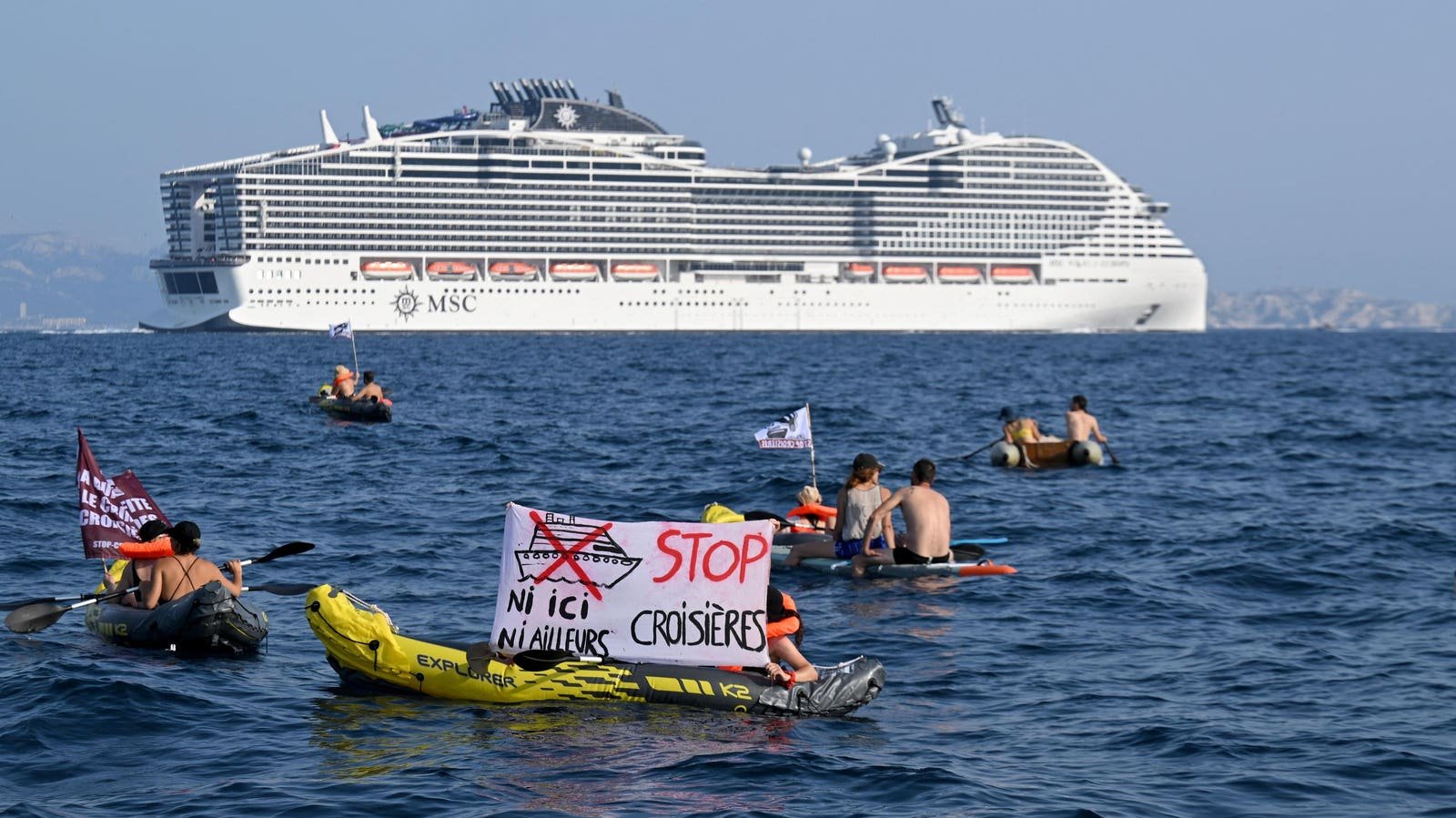
With some cruise ports tightening rules on port calls in part due to protests, some cruise lines are dorced to change itineraries.
AFP via Getty Images
Many cruise lines make alterations to their itineraries before sailing. In late 2024, Carnival guests were notified of itinerary adjustments for five cruise ships in early 2025 and 2026, impacting various ports in the Bahamas.
These changes include port replacements, modified times, and shifts to 11 itineraries, giving guests at least four months to modify their plans if necessary.
While Carnival’s adjustments were minor, cruise lines can make significant changes before or even during sailings. For example, many world cruises planned for 2025 and 2026 have seen major changes due to the need to avoid certain parts of the world.
Let’s explore why these changes happen, and how you can minimize the risk of booking a cruise that ends up being changed.
Advance Changes By Cruise Lines
Cruise lines may adjust itineraries well in advance for several reasons, often tied to global events or local regulations. For instance, political instability or conflict can make certain destinations inaccessible or undesirable.
A prominent example is the suspension of cruises to Saint Petersburg following travel restrictions and security concerns following Russia’s invasion of Ukraine. Baltic cruises now typically feature additional stops in Scandinavian cities like Stockholm, Helsinki, and Copenhagen to compensate for the change.
Regulatory changes in specific regions also play a significant role. Norway’s World Heritage fjords ruling, which aims to ban polluting ships from several iconic fjords, has influenced itinerary planning.
While the regulation’s implementation has been postponed to 2032, some cruise lines preemptively altered their routes to comply with expected environmental standards.
With anti-cruise protests gathering pace, some destinations are cracking down on the type, size and number of ships that can visit. As itineraries are planned years in advance, this can force lines to change their plans.
Economic factors can also drive changes. If a particular cruise isn’t selling well, lines might rework itineraries to include more desirable or profitable ports. Similarly, underperforming destinations may be swapped out for trending hotspots that attract more bookings.
These adjustments allow cruise lines to optimize revenue while meeting passenger demand.
Finally, operational considerations such as port infrastructure upgrades, berth availability, or seasonal weather patterns might necessitate changes.
Last-Minute Changes To Cruises
Booking a trip on a cruise ship’s maiden voyage has great appeal, being among the first people in the world to set sail on a brand new ship. However, the risk of delays or cancelations to maiden voyages are high.
New cruise ships are incredibly complex, and construction delays are common. Also, before a new cruise ship can carry paying guests, it must undergo extensive sea trials and receive certifications from regulatory bodies. Sometimes, unexpected issues are found that must be addressed before the ship is cleared.
Such issues don’t just impact new builds. In the worst case, entire cruises can be canceled shortly before sailing due to overrunning maintenance. For this reason, booking a cruise immediately following a period of maintenance (known as “dry dock”) carries a higher risk of disruption.
Operational Changes During A Cruise
The most likely reason for a change in itinerary is the weather and/or sea conditions. Safety always comes first on a cruise, and it is the captain’s decision that will ultimately decide.
However, local maritime pilots and port authorities will also provide influence. Local pilots have extensive knowledge of the specific conditions and challenges in their waters, including currents, tides, and harbor limitations.
Some ports are more difficult to enter than others. For example, Libson often proves challenging due to its exposure to the Atlantic Ocean and tidal influence along the navigation through the Tagus River. In Northern Norway, the narrow channels entering Bodø can be difficult to navigate during high winds.
Medical emergencies can also lead to sudden itinerary changes. If a passenger or crew member requires urgent medical attention that cannot be managed onboard, the captain may divert the ship to the nearest port with adequate facilities.
In some cases, this might mean bypassing or delaying scheduled stops, particularly if the medical need is critical and the ship is far from land.
Mechanical issues are another possible reason for itinerary adjustments. While modern cruise ships undergo rigorous maintenance and safety checks, unforeseen mechanical problems can arise, sometimes affecting propulsion or essential systems.
In these cases, the captain and operations team may decide to shorten or skip a port to ensure repairs are completed safely and efficiently, minimizing disruption to the overall cruise experience.
Potential itinerary changes are just one reason why obtaining adequate cruise-specific travel insurance is essential. Many policies cover expenses related to canceled excursions and may even offer compensation if a port is missed.
MORE FROM FORBES
Trip Planning
Tonight | Travel Guides on Channel 9 and 9Now S8E10
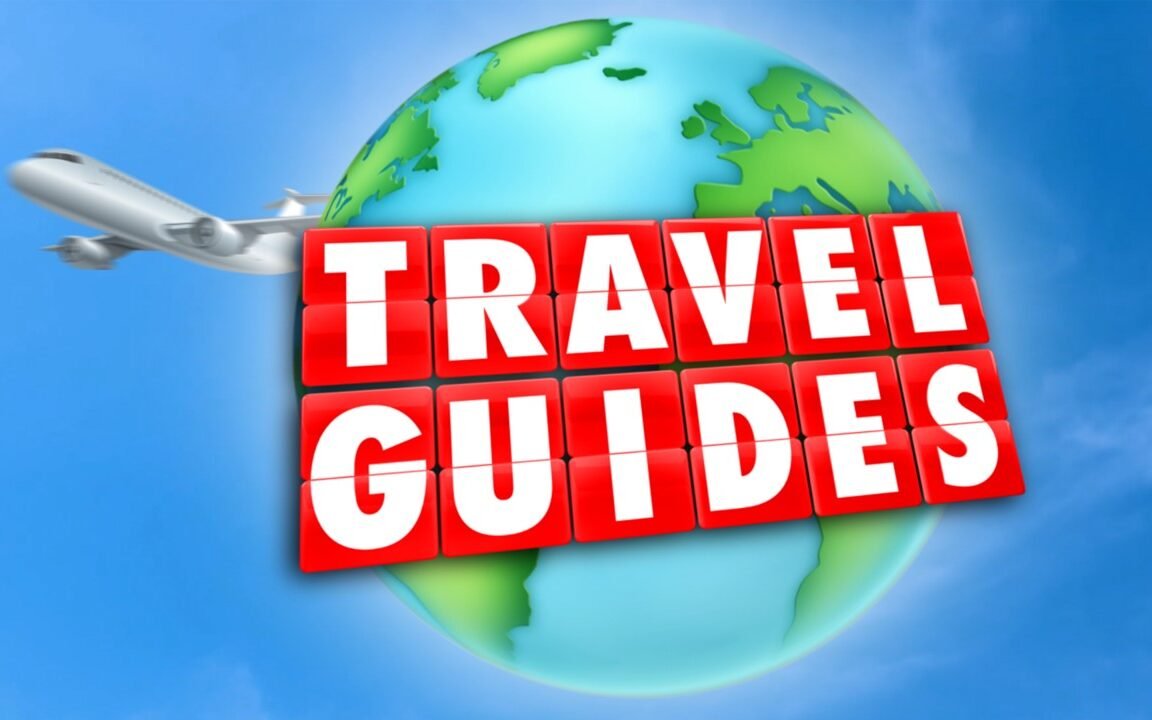
Travel Guides on Channel 9 and 9Now S8E10 – Our Guides enjoy a motorhome road trip through rural NSW. From the rugged beauty of the Blue Mountains, to racing cars around Bathurst’s Mount Panorama, and donning a jumpsuit for the Elvis Festival in Parkes, this trip will have them all shook up.
Country NSW
Travel Guides on Channel 9 and 9Now – Sunday 20 July at 7:00pm
TV Central Nine content HERE
Travel Guides on Channel 9 and 9Now S8E10
Trip Planning
This self-hosted travel app has completely changed how I travel
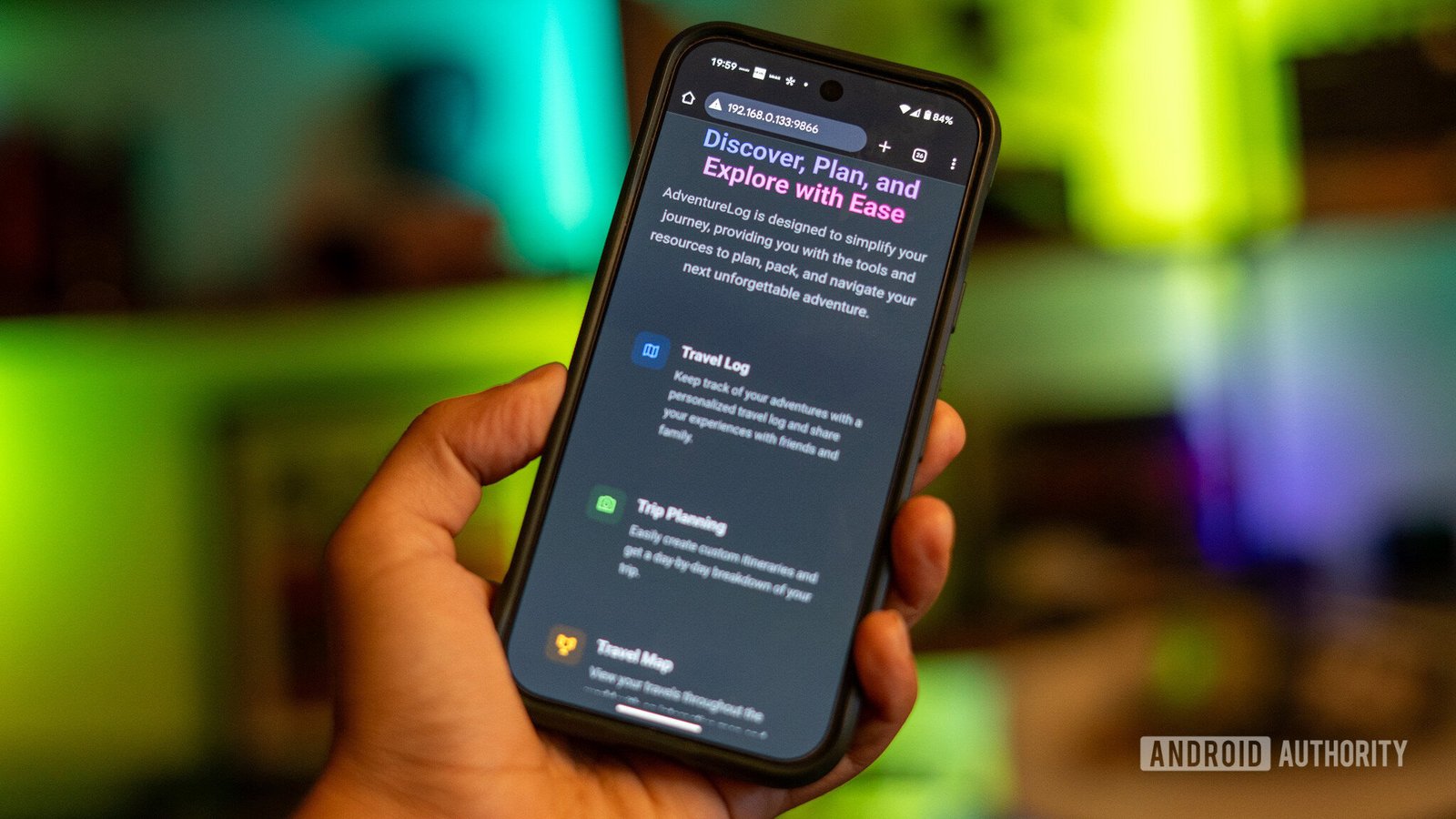
Dhruv Bhutani / Android Authority
Travel has always been a huge part of my life. Whether I’m planning a weekend getaway for a hike or a longer multi-country backpacking trip, I’ve relied on travel apps to help keep things organized. But after years of using some of the best travel apps like Wanderlog, TripIt, making notes in Google Keep or Notion, or even maintaining a pen and paper journal, I realized they all came with frustrating trade-offs. Too many ads, pushy upgrade prompts, opaque subscription models, lack of features, and most worryingly, an always-on stream of data collection and tracking. For something as personal as travel, that’s something I really don’t want.
So earlier this year, I started looking for alternatives. I wanted something lightweight, customizable, and private. If it was self-hostable and open source, even better. Turns out, there really is an open-source project for every need. That search led me to AdventureLog, a self-hosted, open source travel tracker and itinerary manager that’s as functional as it is privacy-respecting. I installed it on my Synology NAS with Docker, and it has completely changed how I travel and plan trips. Here’s how.
Planning without the noise
Dhruv Bhutani / Android Authority
The first time I really put AdventureLog through its paces was on a weeklong trip to Prague. It’s a city I’ve always wanted to revisit, not just pass through. So, with one of my favorite bands performing in the city, it made sense to plan a vacation around it. I wasn’t interested in joining pre-planned walking tours or sticking to an optimized route of “top 10 things to see.” I wanted to keep a free-flowing itinerary with some sights I wanted to see, open-ended enough to go with the flow, while keeping track of the smaller discoveries for a future trip.
Before leaving, I created a new trip in AdventureLog. I added a rough outline of the week, including basics like arrival times, my Airbnb location, and a few scattered bookmarks of places I’d read about. A tucked-away cafe near Letna Park, a record store in Vinohrady, and a speakeasy bar in the Old Town that only locals seemed to talk about online. What was different this time wasn’t just how I planned the trip, but how the tool I was using actually stayed out of the way. There was no clutter, no offers, no pop-ups, no ad-driven suggestions for other things I might want to do. Just a timeline and a clean map interface.
AdventureLog behaves more like a super-charged travel journal than yet another travel app.
All that might sound like a standard travel planning app, but AdventureLog gets a bit more interesting. It also functions as a travel diary. Each day, I logged entries as they happened. Cinnamon buns for breakfast, a random, unplanned visit to the Klementinum library that felt like stepping into a movie set. Or a long walk by the river. The act of logging things in the moment felt like capturing the flavor of the day, the kind of thing that would usually go in my diary and that I’d never preserve in Notion or a basic checklist. By turning the travel app into a travel journal, AdventureLog has become a tool I use a couple of times a week, versus only when I’m planning a trip.
When used to its full potential, AdventureLog can create a personal archive of your trip, complete with notes, places, and impressions. Something few other travel apps can achieve.
Organize, reflect, revisit — All in one place
Dhruv Bhutani / Android Authority
AdventureLog is deceptively simple, but the more I used it, the more I appreciated the depth it offers under the hood. Built with modern tools, it runs fast and reliably even on minimal hardware. The interface is responsive enough to feel like a native app, whether I’m on a laptop or checking it from my phone during a layover.
Dhruv Bhutani / Android Authority
Each trip becomes its own timeline. You can add a name and cover image, then start building out daily logs. The text fields support Markdown, which I found surprisingly useful for structuring my notes. I’m used to Markdown from my notes apps, so it just made text formatting that much quicker. I use it for everything from quick restaurant recs to more reflective journal-style writing. Tags let you group entries across trips, and the integrated OpenStreetMap view ties everything together visually. The nice part about it all is that it’s all optional. You can categorize as much or as little as you want. You don’t need to know how to use a complex database or fiddle with formatting — it just works.
For the first time, I wasn’t switching between multiple apps to get through the day.
One of the things I’ve come to love is how easy it is to glance back and get a bird’s-eye view of my travel history. With other apps, things get siloed with a one trip per doc style, or half-written entries scattered across different platforms. With AdventureLog, everything is in one place. I can scroll through months of travel, click into a trip, and instantly drop back into that headspace. It feels more like a living archive than a planner, especially when coupled with the built-in calendar that gives me a bird’s eye view of upcoming trips.
And because it runs entirely on my own server, nothing leaves that space unless I export it myself. There’s no data collection, no cloud sync to opt out of, and no analytics running quietly in the background. If you’re interested in self-hosting, you probably value that just as much as me. By default, I can only access it on my home network. However, I’ve configured a remote proxy as well for on-the-go access.
If the idea of self-hosting sounds intimidating, it’s not. The installation process for AdventureLog is one of the smoothest I’ve encountered. I used Docker on my Synology NAS, but it runs just as well on a Raspberry Pi, home server, or cloud instance. The documentation is detailed and clear, with effectively a single Docker command that pulls the image, sets up your data and media folders, and gets the app running on your local network.
On my setup, I mounted everything to Volume 2, which is where my Docker install lives, and exposed the right ports for the container. Once I opened it in my browser, AdventureLog walked me through creating my account and setting up the first trip. No dependencies to figure out, and no need to register for any third-party APIs. The app is fully self-contained.
There’s no official mobile app, but the responsive design makes it feel at home on any screen size. If you prefer, you can add it to your homescreen as a shortcut. That’s what I’ve done. I use Tailscale to access my NAS while traveling, but you can just as easily expose it via a reverse proxy, like the one built into Synology NAS drives.
Reclaiming the joy of travel planning
Most travel apps are built around a business model, not your travel needs. Even the most polished ones are ultimately there to sell you something. It could be flights, hotels, local tours, a premium tier, or in many cases, your own data. If you just want a tool to plan and document your trips, these apps can often feel cluttered and overdesigned. Those are the last things you want to deal with when on the road. AdventureLog is the opposite. It doesn’t try to sell anything. There are no ads, no feature limits, and no pop-ups asking you to upgrade. It gives you a clean, functional space to plan trips, take notes, and revisit past travels. That simplicity is what makes it more useful than most commercial alternatives for me.
Trip Planning
US, Mexico, Alaska, Canada, New England, and the Caribbean: New Cruise Routes and Exciting 2025 Itineraries Set to Transform Travel!
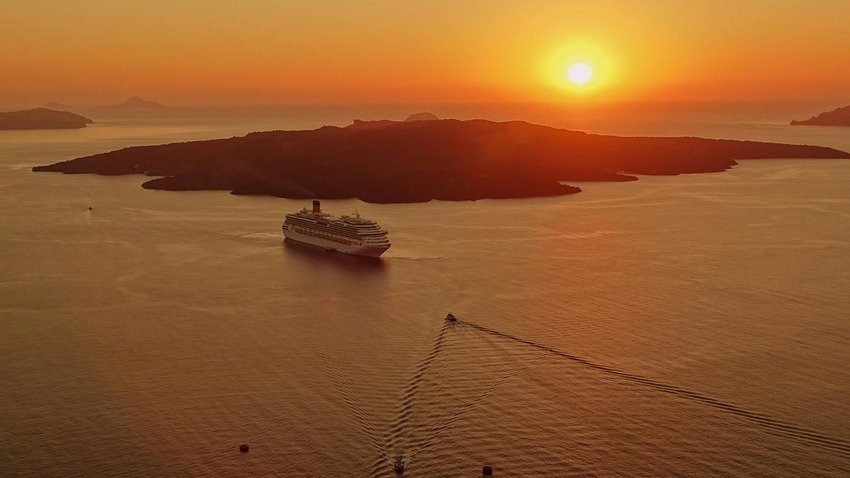
Saturday, July 19, 2025
In 2025, the cruise industry in the United States is experiencing an exciting period of expansion, innovation, and evolution. New cruise routes, services, and collaborations are reshaping the way travelers explore the seas. With government and private sector investments supporting these developments, 2025 promises to be a transformative year for maritime travel. From high-tech ships and private island developments to expanded routes and new port cities, the U.S. cruise industry is set to offer an unforgettable experience for travelers.
In this article, we’ll delve into the major new cruise routes that will be operating in 2025, with a focus on where these routes will be sailing, the new destinations they’ll cover, and how these developments are changing the landscape of the U.S. cruise industry. We will also explore the growing trend of sustainable cruising, advancements in passenger experience, and government-backed initiatives driving the cruise industry’s resurgence.
1. Carnival Cruise Line’s Celebration Key: A New Private Island Experience
One of the most exciting additions to the U.S. cruise scene in 2025 is the opening of Celebration Key, a new private island destination created exclusively for Carnival Cruise Line passengers. Located in the Bahamas, Celebration Key will be accessible to travelers departing from Galveston, Texas, a major cruise hub on the Gulf Coast. Carnival has spent years planning and designing the island, which promises to be a premier destination for those seeking a unique and immersive cruise experience.
The island will feature five distinct themed areas, each designed to cater to different types of travelers. These areas include:
- Paradise Plaza: This central area will be home to a 10-story water slide and the world’s longest beachside pier, offering exciting opportunities for water sports and relaxation.
- Calypso Lagoon: An adults-only area featuring live DJs, tropical bars, and a swim-up bar that will offer an exclusive escape for adults.
- Starfish Lagoon: This family-friendly area will offer shallow waters perfect for kids, along with a toddler splash pad for younger visitors.
- Lokono Cove: A cultural area that will feature local Bahamian artisans, shops, and the island’s vibrant market.
- Pearl Cove Beach Club: An upscale adults-only area with an infinity pool and stunning ocean views.
The island will also offer many recreational and dining options, ensuring a memorable experience for cruise passengers. With Carnival Dream, Carnival Jubilee, Carnival Legend, and Carnival Miracle scheduled to stop at Celebration Key, this addition to Carnival’s itinerary will bring new opportunities for travelers to explore a unique Bahamian destination directly from the United States.
As an integral part of Carnival’s expanding portfolio of private destinations, Celebration Key will enhance the overall cruising experience by offering exclusive amenities and opportunities for relaxation, adventure, and immersion in Bahamian culture.
2. American Cruise Lines: New York City to Troy – The Hudson River Summer Classic Cruises
For those looking to explore the scenic beauty of the Hudson River in New York, American Cruise Lines has launched the Hudson River Summer Classic Cruises. These cruises will run from New York City to Troy, with several stops along the way, including Albany, Kingston, and Sleepy Hollow. This initiative is part of American Cruise Lines’ broader expansion of regional cruise offerings, providing passengers with a unique opportunity to explore the rich history and culture of the Hudson River Valley.
The summer itinerary consists of ten seven-night cruises, each providing an in-depth exploration of the region. Passengers will have the chance to visit iconic historical sites such as the Burden Iron Works Museum in Troy and the New York State Capitol in Albany, as well as take scenic excursions to places like West Point and Sleepy Hollow. This route offers a combination of natural beauty and cultural experiences that are hard to match, particularly for history enthusiasts and nature lovers.
The success of American Cruise Lines’ Hudson River Fall Foliage Cruise prompted the company to expand its operations, offering a full summer schedule. These cruises offer an unforgettable view of the Hudson River and are ideal for passengers seeking a slower-paced, more scenic travel experience compared to traditional ocean cruises.
3. Expansion of New England Cruise Options by American Cruise Lines
In addition to its success on the Hudson River, American Cruise Lines is expanding its offerings in New England with new 8 to 16-day itineraries that showcase the charm of the region. These cruises will explore coastal New England, providing passengers with the opportunity to visit quaint towns, bustling harbors, and historical landmarks.
The new itineraries will visit key destinations such as Maine, Massachusetts, and Rhode Island, offering passengers the chance to experience the region’s natural beauty, seafood culture, and rich maritime history. The American Patriot and American Pioneer, both new ships for the line, will operate these exclusive New England cruises. They provide small-ship experiences that allow passengers to enjoy intimate, personalized service while traveling to some of the region’s most iconic spots.
American Cruise Lines’ emphasis on small-ship cruising makes it possible to explore places that larger ships cannot reach, offering a more immersive and serene travel experience. This expansion is particularly appealing for travelers looking to enjoy a leisurely cruise with a focus on culture, history, and natural beauty.
4. MSC Cruises Expands U.S. Deployment in 2025
In 2025, MSC Cruises has unveiled its expanded U.S. deployment, which will see six ships operating from Miami, Port Canaveral, Galveston, and Seattle. These ships will provide a variety of itineraries to the Caribbean, Bahamas, and Alaska. MSC’s new deployment will offer passengers a wider selection of itineraries and experiences, including options for those interested in both tropical and cold-water cruises.
MSC Cruises, known for its stylish and luxurious ships, is making a significant investment in the U.S. market by adding new destinations and strengthening its presence. The ships will cater to a broad range of travelers, offering activities, entertainment, and dining options suited to both families and adults.
With MSC Cruises’ increased U.S. deployment, travelers will have the chance to embark on cruises that visit both familiar and off-the-beaten-path destinations. This expansion is part of the cruise line’s strategy to tap into the growing U.S. cruising market, offering more opportunities for passengers to explore the world from U.S. ports.
5. Royal Caribbean’s Quantum of the Seas in Los Angeles
Royal Caribbean is making waves in 2025 with its iconic Quantum of the Seas returning to the U.S. market. Departing from Los Angeles, the Quantum of the Seas will offer cruises primarily to Mexico. This marks a significant return for the Quantum-class ship, known for its innovative features and luxurious amenities.
The Quantum of the Seas will feature numerous activities, including the Ripcord by iFly (skydiving simulator), the North Star observation capsule offering panoramic views, and an array of entertainment options for all ages. With Los Angeles becoming an increasingly popular embarkation point, this cruise will provide a comfortable and exciting option for those looking to explore Mexico from the West Coast.
The addition of this cruise route to Royal Caribbean’s offerings further solidifies the cruise line’s commitment to expanding its presence in California, making it a key player in U.S. maritime tourism.
6. Alaska’s Expanding Cruise Routes: New Itineraries and Ports of Call
In 2025, Alaska continues to be one of the most popular cruise destinations, with several new itineraries and expanded routes in the works. Cruises that explore Alaska’s coastal beauty, including Juneau, Ketchikan, and Anchorage, are in high demand, with some new ships being deployed to these regions.
Oceania Cruises is launching a new “Wilds of Alaska” itinerary aboard the Oceania Riviera, which will visit lesser-known ports like Kodiak, Homer, and Wrangell. The new itinerary offers a more off-the-beaten-path approach to exploring Alaska, with excursions that cater to those interested in wildlife, natural beauty, and native culture.
Alaskan Dream Cruises, which offers small-ship experiences, is also launching a new Alaska’s Glacier Bay & Island Adventure tour. This small-ship itinerary focuses on Southeast Alaska, taking passengers to less accessible ports, offering intimate excursions, and enhancing the overall Alaskan experience.
With these new routes, travelers will have the opportunity to visit some of the most scenic and unique destinations in the world. The cruises also highlight Alaska’s rising popularity as a must-visit location for cruise-goers, with expanded options catering to various tastes and preferences.
7. Holland America’s New Canada and New England Itineraries
Holland America Line is introducing new Canada and New England itineraries for 2025. The cruise line is focusing on the cultural richness and natural beauty of this region, offering cruises from New York City to Nova Scotia, Prince Edward Island, and Newfoundland. These cruises provide a mix of historical tours, local cultural experiences, and visits to some of the most beautiful landscapes in the world.
The new itineraries feature visits to iconic Canadian destinations, including Quebec City, Charlottetown, and Halifax, offering a glimpse into Canada’s colonial history and its maritime roots. Holland America’s focus on New England and Canada further establishes these regions as premier cruise destinations, drawing in passengers looking for an enriching, scenic journey.
8. New Cruise Routes to the Caribbean and Mexico
The Caribbean and Mexico continue to be key destinations for cruise lines operating in the United States. With warm climates, rich cultural experiences, and beautiful beaches, these regions remain highly popular with travelers. In 2025, multiple cruise lines, including Carnival, Norwegian, and Royal Caribbean, are expanding their Caribbean and Mexico itineraries, offering more departure points from ports in Florida, California, and Texas.
New routes connecting Miami to the Eastern Caribbean and Southern Mexico are expected to be highly popular, offering travelers access to destinations like Cozumel, Grand Cayman, and Aruba. These expanded routes are ideal for travelers looking to explore both tropical destinations and diverse cultures in a relatively short amount of time.
A Thriving U.S. Cruise Industry in 2025
In 2025, the U.S. cruise industry is flourishing with exciting new routes, expanded itineraries, and cutting-edge ships. From Carnival’s exclusive private island in the Bahamas to Royal Caribbean’s luxurious ships departing from Los Angeles, and new destinations in Alaska, New England, and the Caribbean, the variety of cruise options available to travelers is unprecedented. The integration of sustainability-focused initiatives and the expansion of domestic routes highlight the cruise industry’s efforts to provide exciting, responsible travel options for passengers.
As 2025 progresses, the continued growth of these new routes and the introduction of innovative cruise offerings promise to make the U.S. cruise industry a thriving and vital part of the global tourism landscape. Whether exploring the scenic beauty of Alaska, the historic charm of New England, or the sun-soaked beaches of the Caribbean, travelers can look forward to memorable, diverse, and accessible cruise experiences.
-

 AI in Travel16 hours ago
AI in Travel16 hours agoAI Travel Revolution: Must-Have Guide to the Best Experience
-

 Brand Stories1 week ago
Brand Stories1 week agoHow Elon Musk’s rogue Grok chatbot became a cautionary AI tale
-

 Brand Stories2 weeks ago
Brand Stories2 weeks agoVoice AI Startup ElevenLabs Plans to Add Hubs Around the World
-

 Asia Travel Pulse2 weeks ago
Asia Travel Pulse2 weeks agoLooking For Adventure In Asia? Here Are 7 Epic Destinations You Need To Experience At Least Once – Zee News
-

 AI in Travel2 weeks ago
AI in Travel2 weeks ago‘Will AI take my job?’ A trip to a Beijing fortune-telling bar to see what lies ahead | China
-

 Brand Stories2 weeks ago
Brand Stories2 weeks agoChatGPT — the last of the great romantics
-

 The Travel Revolution of Our Era1 month ago
The Travel Revolution of Our Era1 month agoCheQin.ai Redefines Hotel Booking with Zero-Commission Model
-

 Destinations & Things To Do16 hours ago
Destinations & Things To Do16 hours agoUntouched Destinations: Stunning Hidden Gems You Must Visit
-

 Brand Stories2 weeks ago
Brand Stories2 weeks agoHumans must remain at the heart of the AI story
-

 Brand Stories2 weeks ago
Brand Stories2 weeks agoChildproofing the internet is a bad idea

